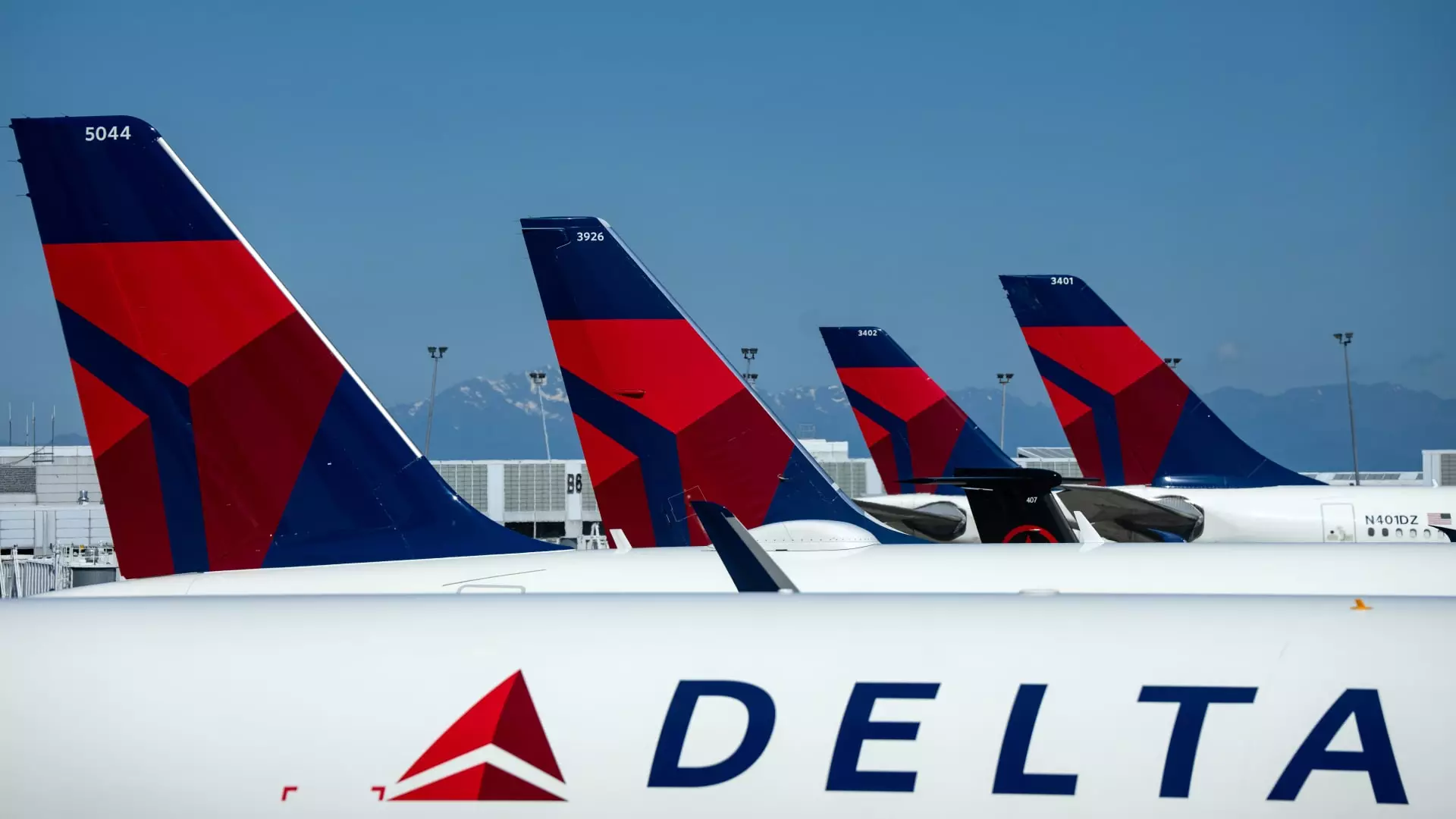As the summer winds down, airlines are beginning to show a noteworthy uptick in unit revenues, signaling a future where flying is likely to cost passengers more. The recent announcements from major airlines like Alaska and Delta provide compelling insights into the industry’s evolving landscape.
Alaska Airlines has attracted attention by significantly raising its profit forecast for the third quarter. Initially estimating profits of no more than $1.60 per share, the airline adjusted its projection to between $2.15 and $2.25 per share. This upward revision indicates a robust performance that surprised even industry analysts. The company anticipates a unit revenue increase of up to 2%, a monumental shift from previous expectations of stagnation or slight growth. Such an optimism stems largely from the unexpected windfall caused by operational disruptions faced by competitor Delta Air Lines, primarily the fallout from a CrowdStrike outage that occurred in July.
The impacts of the outage provide an unusually advantageous position for airlines like Alaska, where customer redirection has allowed the company to siphon off business from affected travelers. The acknowledgment of operational challenges for Delta underscores the interconnectedness of airlines: changes in one company’s performance can have ripple effects on others. With Alaska explicitly noting these disruptions as beneficial, it highlights a competitive landscape where agility and responsiveness can translate into significant financial gains.
Conversely, Delta appears to be encountering more obstacles as it navigates the aftermath of the technology service outage. While the airline is reporting an increase in both domestic and trans-Atlantic unit revenues for September compared to the previous year, its revised forecasts indicate a substantial loss, expected to amount to $500 million. This financial hit is attributed to the cancellation of approximately 7,000 flights. Despite the adversity, Delta’s president, Glen Hauenstein, remains optimistic about the company’s future, emphasizing that there has been no noticeable decline in bookings, pointing toward resilience in consumer demand.
The challenges faced by Delta illustrate the precarious balance airlines must maintain between operational efficacy and customer satisfaction. Bad experiences—such as flight cancellations due to outages—can threaten long-term customer loyalty even when short-term revenues appear stable. The airlines’ collective response to these hurdles reveals that maintaining and uplifting customer experience could be pivotal in retaining market share.
Amidst an environment where air travel demand has fluctuated, the latest data from the U.S. shows a turnaround in pricing strategies. For the first time in months, the airfare price index saw an increase of 3.9% in August. This suggests that airlines are adjusting their pricing mechanisms to capitalize on higher demand while striving to improve profitability. As a result, carriers like Frontier are cautiously optimistic, revising their forecasts for the future to indicate a break-even point that was previously estimated to be significantly negative.
This tentative profitability reflects broader trends within the industry where airlines have moderated capacity in response to demand shifts. By tempering the number of available flights, airlines aim to stabilize pricing and bolster revenues, which can create an uptick in customer satisfaction due to increased capacity management.
Airlines are also strategizing to attract more high-spending customers by offering enhanced travel experiences. Full-service airlines like United and Delta are innovating their service offerings—ranging from upgraded food options to improvements in loyalty programs. United’s CFO outlines a multifaceted approach to creating premium experiences, suggesting that this focus on quality could draw wealthier travelers away from budget airlines.
Simultaneously, the industry faces challenges with staffing as the rapid hiring spree in previous years has now led to a halt in recruiting. Issues with late aircraft deliveries from manufacturers have compounded these challenges, indicating a battlefield that is not only economic but also logistical.
The current trends in the airline industry tell a complex story of recovery and adaptation. As airlines head into the next quarter, the dual dynamic of rising revenues alongside operational challenges presents both opportunities and threats. Airlines like Alaska are leveraging competitive advantages from their rivals’ misfortunes, while Delta navigates the pitfalls of operational mishaps. With a keen eye on enhancing customer experience and optimizing pricing strategies, the future of air travel promises to remain dynamic amidst changing market forces. Airlines must stay resilient, innovative, and customer-oriented to thrive in this ever-evolving landscape.

